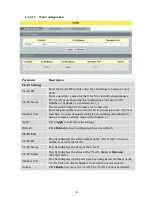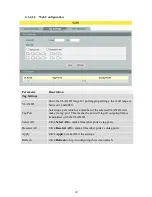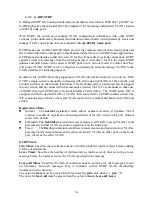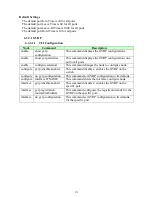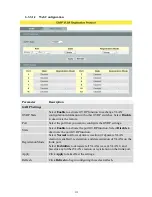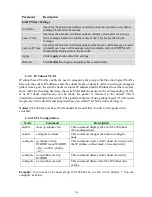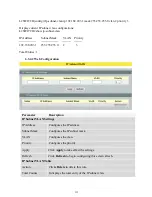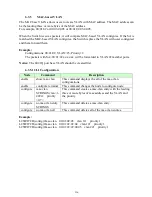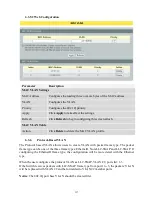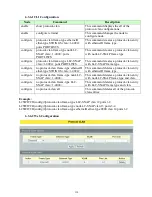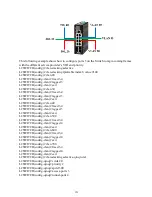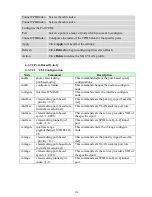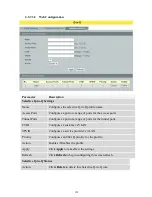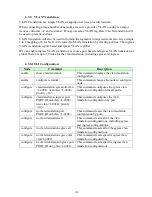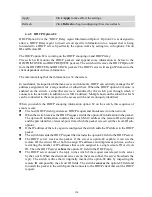
119
Parameter
Description
Protocol VLAN Settings
Frame Type
Select one of three frame types, “EthernetIU” and “NonLLC-SNAP”
and “LLC-SNAP”.
Ethernet type
Input the Ethernet type for the EthernetII frame type.
VLAN
Configure the VLAN ID.
Port List
Configure the member ports.
Apply
Click
Apply
to take effect the settings.
Refresh
Click
Refresh
to begin configuring this screen afresh.
Protocol VLAN Table
Action
Click
Delete
to delete the protocol VLAN profile.
6.3.7
Q-in-Q VLAN (VLAN Stacking)
Q-in-Q tunneling is also known as VLAN stacking. Both of them use 802.1q double tagging
technology. Q-in-Q is required by ISPs (Internet Service Provider) that need Transparent LAN
services (TLS), and the service provider has their own set of VLAN, independent of customer
VLANs. Typically, each service provider VLAN interconnects a group of sites belonging to a
customer. However, a service provider VLAN could also be shared by a set of customers sharing
the same end points and quality of service requirements of the VLAN. Double tagging is
considered to be a relatively simpler way of implementing transparent LAN. This is
accomplished by encapsulating Ethernet Frame. A second or outer VLAN tag is inserted in
Ethernet frames sent over the ingress PE (Provider Edge). This VLAN tag corresponds to the
VLAN of the Service Provider (SP). When the frame reaches the destination PE, the SP VLAN
is stripped off. The DA of the encapsulated frame and the VLAN ID are used to take further L2
decisions, similar to an Ethernet frame arriving from a physical Ethernet port. The SP VLAN tag
determines the VPLS (Virtual Private LAN Service) membership. Double tagging aggregates
multiple VLANs within another VLAN and provides a private, dedicated Ethernet connection
between customers to reach their subnet transparently across multiple networks. Thus service
providers can create their own VLANs without interfering with customer VLANs by using
double tagging. This allows them to connect customers to ISPs and ASPs (Application Service
Provider).
The ports that are connected to the service provider VLANs are called tunnel ports, and the ports
that are connected to the customer VLANs are called access (subscriber/customer) ports. When
a port is configured as tunnel port, all the outgoing packets on this port will be sent out with
SPVLAN (SPVID and 1p priority) tag. The incoming packet can have two tags (
CVLAN), one tag (SPVLAN or CVLAN), or no tag. In all cases, the packet is sent out with a
SPVLAN tag. When a port is configured as an access port, the incoming traffic can have only a
CVLAN (CVID and 1p priority) tag or no tag. Hence, all the packets that are being sent out of
Summary of Contents for NGI-M08C4POE8-2
Page 1: ......
Page 197: ...197 Clear Clear the statistics of the valn ...
Page 298: ...298 9 2 2 Web Configurations ...

